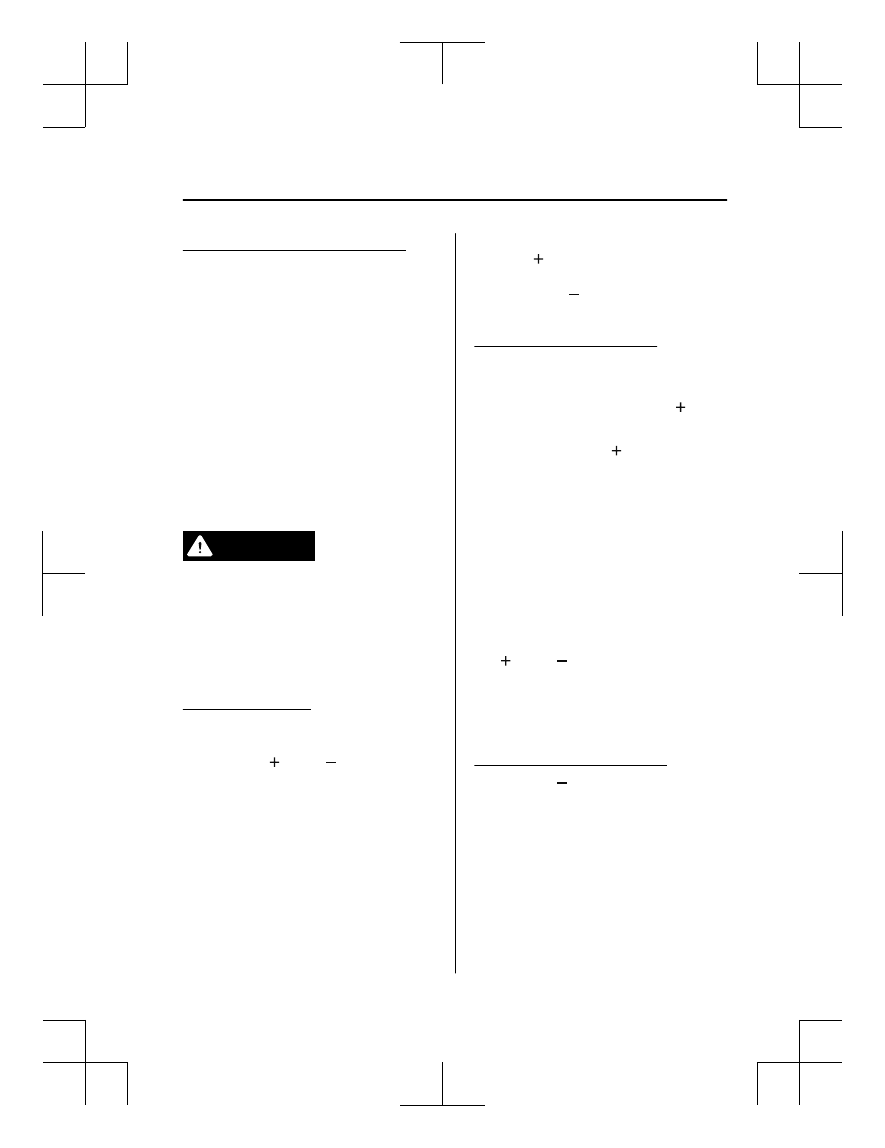Mazda 3 Hatchback (2018 year). Manual - part 15

Switching to cruise control function
When the MODE switch is pressed until
the system switches to the cruise main
indication (white) while the MRCC
system is turned on, the system switches to
the cruise control function.
When the system switches to the cruise
control function, the cruise main
indication (white) is displayed in the
instrument cluster and the active driving
display to notify the driver as follows:
The MRCC set indication (green) or the
MRCC main indication (white) is turned
off, and the cruise main indication
(white) is turned on.
WARNING
Always turn off the cruise control function
when it is not in use:
Leaving the cruise control function turned
on when it is not in use is dangerous as it
could operate unexpectedly, resulting in an
accident.
How to set the speed
Adjust the system to the desired vehicle
speed using the accelerator pedal.
When the SET or SET switch is
pressed, the cruise set indication (green) is
turned on and headway control begins.
NOTE
The system may not be able to maintain
the set speed constantly depending on
driving conditions such as steep up or
down slopes.
The speed will continue increasing while
the SET switch is pressed and held.
The speed will continue decreasing
while the SET switch is pressed and
held.
How to increase the set speed
The set speed can be increased using the
following operations:
To increase speed using the SET
switch
Press and hold the SET switch and
release the switch at the desired speed.
The set speed can be adjusted
incrementally (1 km/h (1 mph)
increments) by pressing the switch and
releasing it immediately. For example, if
the switch is pressed 4 times, the set speed
increases by about 4 km/h (4 mph).
To increase speed using accelerator
pedal
Depress the accelerator pedal and press the
SET or SET switch at the desired
speed.
If the switch is not operated, the system
returns to the set speed after you release
your foot from the accelerator pedal.
How to Decrease the Set Speed
Press the SET switch continuously and
release the switch at the desired speed.
The set speed can be adjusted
incrementally (1 km/h (1 mph)
increments) by pressing the switch and
releasing it immediately. For example, if
the switch is pressed 4 times, the set
vehicle speed decreases by about 4 km/h
(4 mph).
When Driving
i-ACTIVSENSE
4-111
Mazda3_8GE4-EA-17F_Edition1
2017-4-7 11:59:21